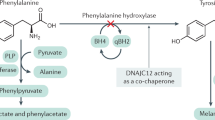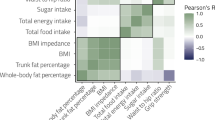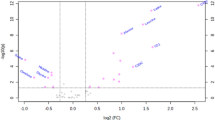Abstract
Neuropsychologic studies have shown that even phenylketonuric patients treated early suffer from phenylalanine-related deficits in all age periods, from childhood to adulthood. This study was performed to determine whether phenylketonuric children show specific frontal lobe–dependent deficits when compared with diabetic patients. The comparative study included 42 phenylketonuric patients, 10 to 18 y of age [mean 14.7 (years, months), SD 2.9], and 42 diabetic patients matched for sex, age, and socioeconomic status. Patients were assessed for intelligence quotient (Culture Fair Intelligence Test), information processing (Wisconsin Card Sorting Test, Trail-Making Test), and selective (Stroop task) as well as sustained attention (Test d-2). Phenylketonuric patients had significantly poorer results than the diabetic patients. Within all tests, however, this was due to reduced performance speed, not to deficits in specific functions. Patients did not show deficits in insight and learning. The selection abilities and the sustained attention of the phenylketonuric patients were not impaired. Performance speed and blood phenylalanine levels were negatively correlated. Elevated phenylalanine levels may cause an imbalance in neurotransmitter metabolism. However, this seems to refer to a global neurotoxic effect rather than to specific effects on the dopaminergic system, which would affect specifically the activation of the frontal lobes.
Similar content being viewed by others
Log in or create a free account to read this content
Gain free access to this article, as well as selected content from this journal and more on nature.com
or
Abbreviations
- CFT 20:
-
Culture Fair Intelligence Test–Scale 2
- CWIT:
-
Color-Word-Interference-Task
- HBA1:
-
glycohemoglobin A1
- PHE:
-
phenylalanine
- PKU:
-
phenylketonuria
- WCST:
-
Wisconsin Card Sorting Test
- ZVT:
-
German Number Combination Test (Zahlen-Verbindungs-Test)
References
Smith I, Beaseley MG, Ades AE 1991 Effect on intelligence of relaxing the low phenylalanine diet in phenylketonuria. Arch Dis Child 65: 311–316
Milner JD, Wurtman RJ 1986 Effects of phenylalanine on the release of endogenous dopamine from rat striatal slices. J Neurochem 47: 1444–1448
Smith I 1994 Treatment of phenylalanine hydroxylase deficiency. Acta Paediatr Suppl 407: 60–65
McKusick VA, Francomano CA, Antonarakis SE, Pearson PL 1994 Mendelian Inheritance in Man. A Catalog of Human Genes and Genetic Disorders, 11th Ed. The Johns Hopkins University Press, Baltimore, pp 2113–2124
Scriver CR, Kaufman S, Eisensmith RC, Woo SLC 1995 The hyperphenylalaninemias. In: Scriver CR (ed) Inherited Disease,Vol 1. McGraw-Hill, New York, pp 1015–1075
Burgard P, Schmidt E, Rupp A, Schneider W, Bremer HJ 1996 Intellectual development of the patients of the German Collaborative Study of patients treated for phenylketonuria. Eur J Pediatr 155( suppl 1): S33–S38
Holtzman NA, Kronmal RA, van Doorninck W, Azen C, Koch R 1986 Effect of age at loss of dietary control on intellectual performance behavior of children with phenylketonuria. N Engl J Med 314: 593–598
Rey F, Abadie V, Plainguet F, Rey J 1996 Long-term follow up of patients with classical phenylketonuria after diet relaxation at 5 years of age. The Paris Study. Eur J Pediatr 155( suppl 1): S39–S44
Brunner RL, Berry HK 1987 Phenylketonuria sustained attention: the continuous performance test. Int J Clin Neuropsychol 9: 68–70
Burgard P, Rey F, Rupp A, Abadie V, Rey J 1997 Neuropsychological functions in early treated patients with phenylketonuria on off diet. Results of a cross-national cross-sectional study. Pediatr Res 41: 368–347
Diamond A 1994 Phenylalanine levels of 6 to 10 mg/dl may not be as benign as once thought. Acta Paediatr Suppl 407: 89–91
Faust D, Libon D, Pueschel S 1986 Neuropsychological functioning in treated phenylketonuria. Int J Psychiatr Med 16: 169–177
Griffiths P, Campbell R, Robinson P 1998 Executive function in treated phenylketonuria as measured by the one-back two-back versions of the continuous performance task. J Inherit Metab Dis 21: 125–135
Schmidt E, Burgard P, Rupp A 1996 Effects of concurrent phenylalanine levels on sustained attention calculation speed in patients treated early for phenylketonuria. Eur J Pediatr 155( suppl 1): 82–88
Schmidt E, Rupp A, Burgard P, Pietz J, Weglage J, Sonneville de L 1994 Sustained attention in adult phenylketonuria: the influence of the concurrent phenylalanine blood level. J Clin Exp Neuropsychol 16: the influence of the concurrent phenylalanine blood level. J Clin Exp Neuropsychol 16 681–688
Waisbren SE, Brown MJ, Sonneville de LMJ, Levy HL 1994 Review of neuropsychological functioning in treated phenylketonuria: an information processing approach. Acta Paediatr 407: 98–103
Cleary MA, Walter JH, Wraith JE, Jenkins SM, Alani SM, Tyler K, Whittle D 1994 Magnetic resonance imaging of the brain in phenylketonuria. Lancet 344: 87–90
Hommes FA 1994 Loss of neurotransmitter receptors by hyperphenylalaninemia in the HPH-5 mouse brain. Acta Paediatr Suppl 407: 120–121
Lou HC, Güttler F, Lykkelund C, Bruhn P, Niederwieser A 1985 Decreased vigilance neurotransmitter synthesis after discontinuation of dietary treatment for phenylketonuria in adolescents. Eur J Pediatr 144: 17–20
Lou HC, Lykkelund C, Gehrdes AM, Udesen H, Bruhn P 1987 Increased vigilance dopamine synthesis by large doses of tyrosine or phenylalanine restriction in phenylketonuria. Acta Paediatr 76: 560–565
McKean CM 1972 The effects of high phenylalanine concentrations on serotonin catecholamine metabolism in the human brain. Brain Res 47: 469–476
Pratt OE 1992 Transport inhibition in the pathology of phenylketonuria other inherited metabolic diseases. J Inherit Metab Dis 2( suppl 5): 75–81
Divac I, Bjorklund A, Lindvall O, Passingham R 1978 Converging projections from the mediodorsal thalamic nucleus mesencephalic dopaminergic neurons to the neocortex in three species. J Comp Neurol 180: 59–72
Brass CA, Greengard O 1982 Modulation of cerebral catecholamine concentrations during hyperphenylalaninemia. Biochem J 208: 765–771
Weglage J, Pietsch M, Fünders B, Koch HG, Ullrich K 1996 Deficits in selective sustained attention processes in early treated children with phenylketonuria—result of impaired frontal lobe functions?. Eur J Pediatr 155: 200–204
Welsh MC, Pennington BF, Ozonoff S, Rouse B, McCabe ERB 1990 Neuropsychology of early-treated phenylketonuria: specific executive function deficits. Child Dev 61: 1697–1713
Weglage J, Grenzebach M, Pietsch M, Feldmann R, Linnenbank R, Denecke J, Koch HG 2000 Behavioral emotional problems in early treated adolescents with phenylketonuria in comparison to diabetic patients healthy controls. J Inherit Metab Dis 23: 487–496
Weiss RH 1987 Grundintelligenztest Skala 2 CFT 20. Hogrefe, Göttingen, pp 42–45
Milner B 1963 Effects of different brain lesions on card sorting. Arch Neurol 9: 90–100
Robinson AL, Heaton RK, Lehman AW, Stilson DW 1980 The utility of the Wisconsin Card Sorting Test in detecting localizing frontal lobe lesions. J Consult Clin Psychol 48: 605–614
Weinberger DR, Berman KF, Zec RZ 1986 Physiologic dysfunction of dorsolateral prefrontal cortex in schizophrenia. I: regional cerebral blood flow evidence. Arch Gen Psychiatry 43: 114–124
Oswald DW, Roth E 1987 Der Zahlen-Verbindungs-Test (ZVT). 2. Auflage. Hogrefe, Göttingen, pp 15–19
Bäumler G 1985 Farbe-Wort-Interferenztest(FWIT)nach JR Stroop. Hogrefe, Göttingen, PP 10–14
Pardo JV, Pardo PJ, Janer KW, Raichle ME 1990 The anterior cingulate cortex mediates processing selection in the Stroop attentional conflict paradigm. Proc Natl Acad Sci USA 87: 256–259
Bench CJ, Frith CJ, Grasby PM, Friston KJ, Frackowiak RSJ, Dolan RJ 1993 Investigations of the functional anatomy of attention using the Stroop test. Neuropsychologia 31: 907–922
Perret E 1974 The left frontal lobe of man the suppression of habitual responses in verbal categorical behaviour. Neuropsychologia 12: 323–330
Brickenkamp R 1994 Test d2. Aufmerksamkeits-Belastungs-Test 8: Auflage. Hogrefe, Göttingen, PP 28–39
Burgard P, Bremer HJ, Buhrdel P, Clemens PC, Monch E, Przyrembel H, Trefz FK, Ullrich K 1999 Rationale for the German recommendations for phenylalanine level control in phenylketonuria. Eur J Ped 158: 46–54
Ullrich K, Weglage J, Oberwittler C, Pietsch M, Fünders B, van Eckhardstein H, Colombo JP 1994 Effect ofl-dopa on pattern visual evoked potentials (P-100) neuropsychological tests in untreated adult patients with phenylketonuria. J Inherit Metab Dis 17: 349–352
Pietz J, Kreis R, Rupp A, Mayatepek E, Rating D, Boesch C, Bremer HJ 1999 Large neutral amino acids block phenylalanine transport into brain tissue in patients with phenylketonuria. J Clin Invest 103: 1169–1178
Acknowledgements
The authors thank the patients and their parents for participating in this study.
Author information
Authors and Affiliations
Corresponding author
Additional information
Supported, in part, by the SHS Company, Heilbronn, Germany.
Rights and permissions
About this article
Cite this article
Feldmann, R., Denecke, J., Pietsch, M. et al. Phenylketonuria: No Specific Frontal Lobe-Dependent Neuropsychological Deficits of Early-Treated Patients in Comparison with Diabetics. Pediatr Res 51, 761–765 (2002). https://doi.org/10.1203/00006450-200206000-00017
Received:
Accepted:
Issue date:
DOI: https://doi.org/10.1203/00006450-200206000-00017
This article is cited by
-
Tackling frontal lobe–related functions in PKU through functional brain imaging: a Stroop task in adult patients
Journal of Inherited Metabolic Disease (2011)
-
Correlation of age‐specific phenylalanine levels with intellectual outcome in patients with phenylketonuria
Journal of Inherited Metabolic Disease (2011)
-
Executive dysfunction in treated phenylketonuric patients
European Child & Adolescent Psychiatry (2009)



